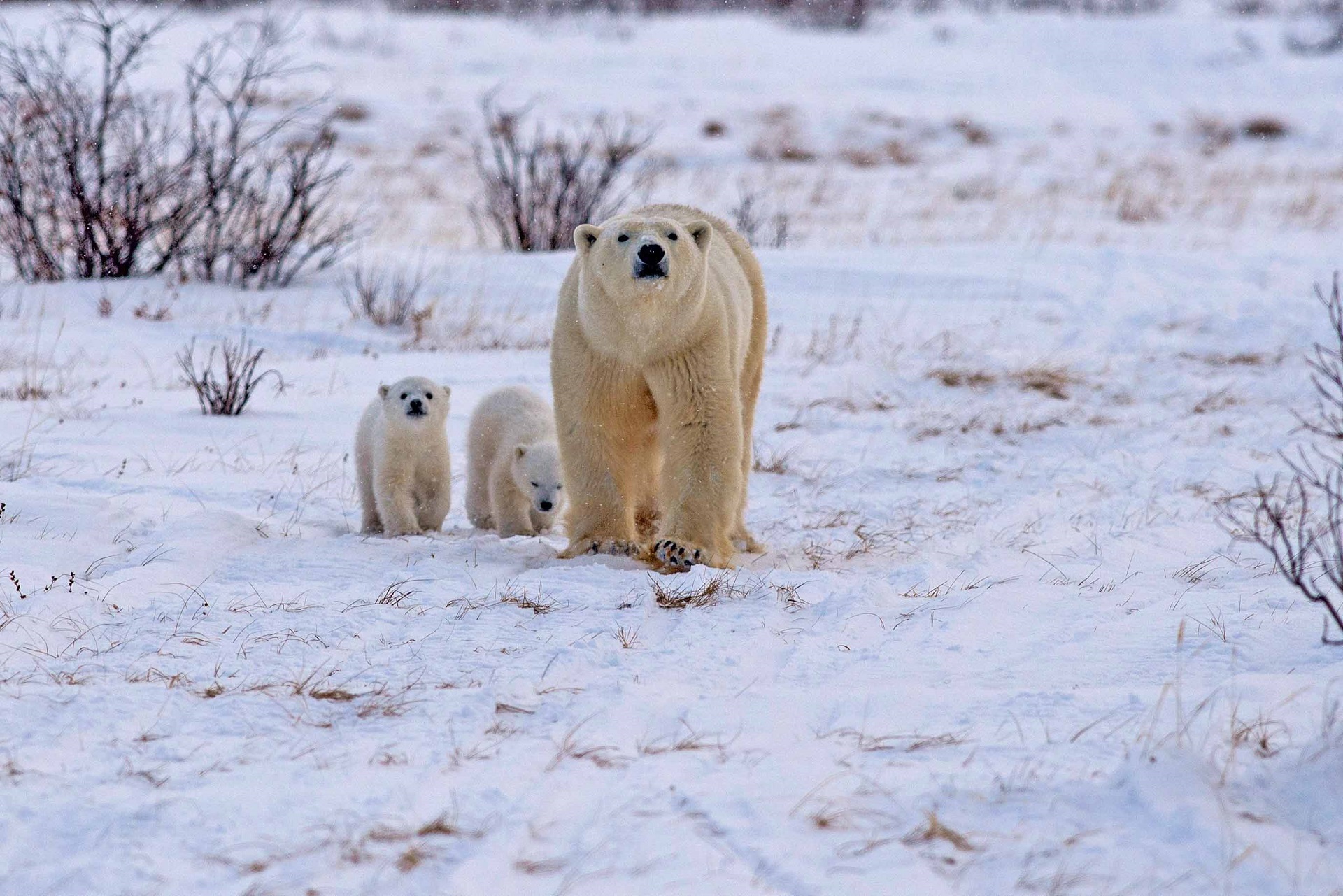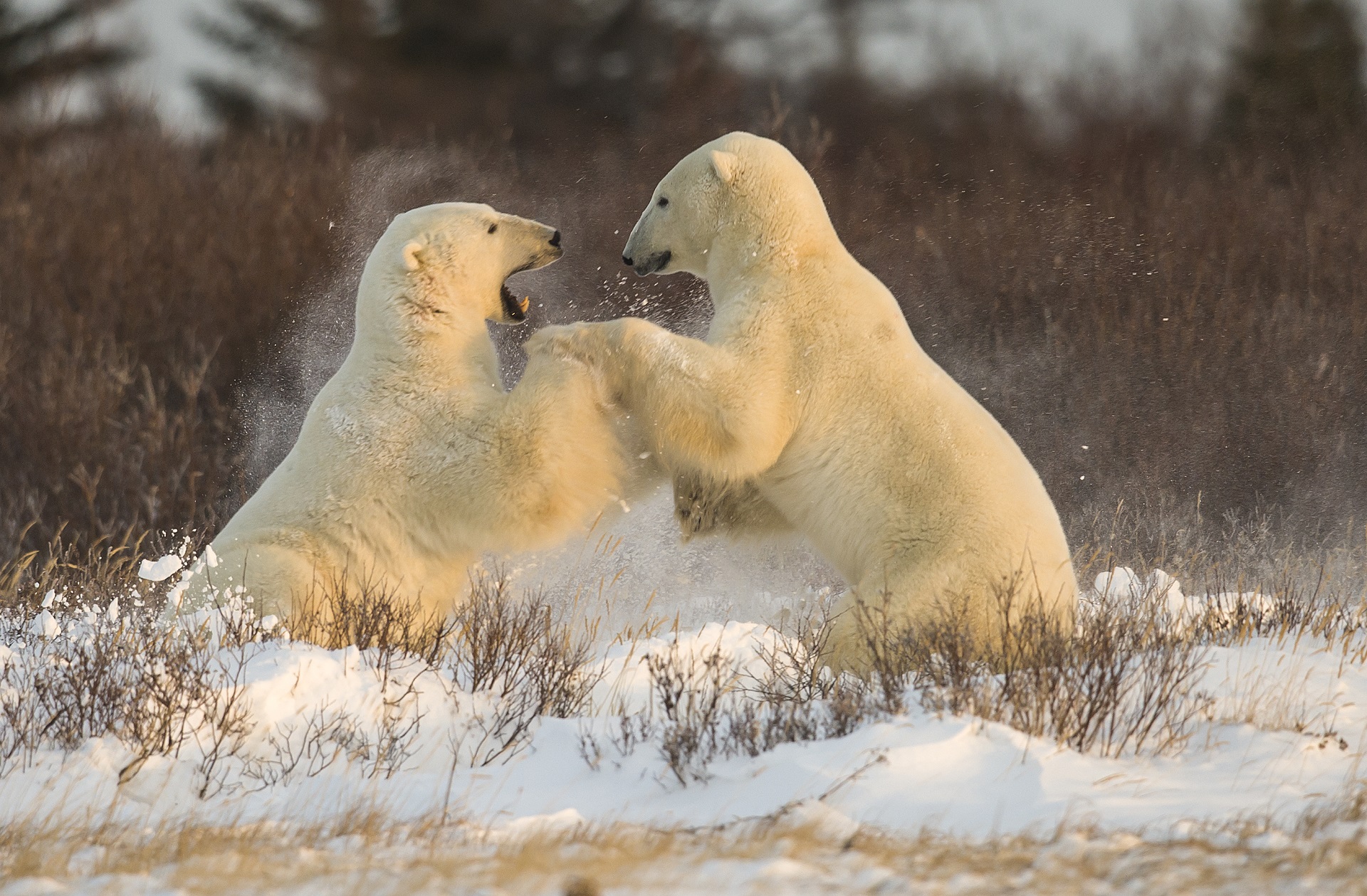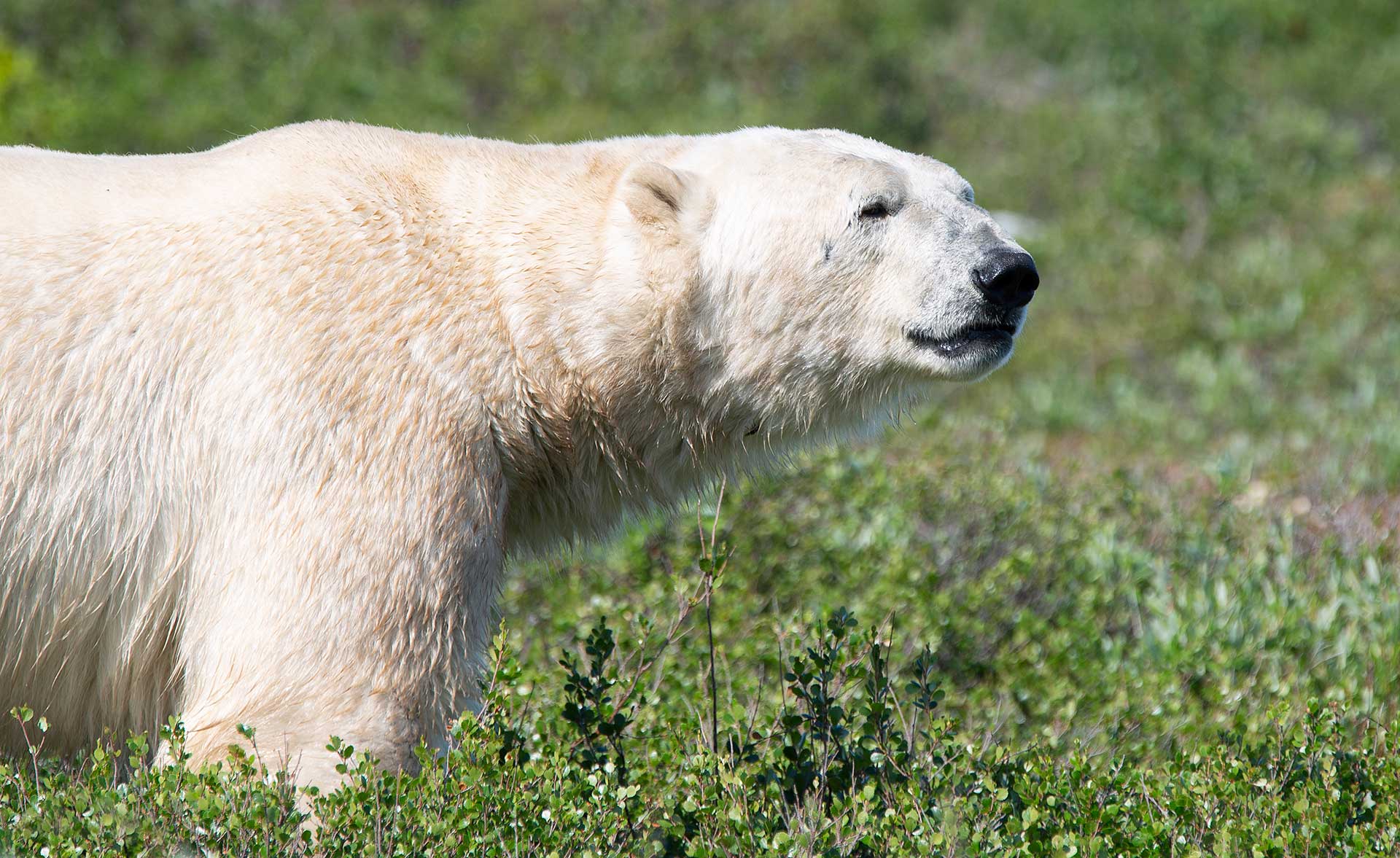by Vanessa Desorcy
The life of a polar bear can be summed up to sound like the plot of a blockbuster movie: feast and famine, competition, and survival of the fittest. These iconic mammals demonstrate remarkable strength and resilience in the face of adversity, and this has helped them earn the moniker Lords of the Arctic. If you’ve ever wondered what the life cycle of these magnificent white bears is like, read on!
Mating
Unlike many other members of the animal kingdom, it is not ovulation that triggers mating, but rather the brief courtship ritual initiated by a male polar bear that triggers ovulation. It’s thought that females have scent glands on their feet that capture a male’s attention.
A male polar bear has roughly a one-in-three chance of mating with a female polar bear. His suitability as a mate depends on whether he is bigger and stronger than the other male bears that are scoping her out. Polar bears will spar and fight until one comes out on top, earning the right to mate.
Throughout the fall months, while polar bears are biding their time on land, males practice their sparring skills in anticipation of mating season, which occurs out on the sea ice in late spring. We often see them sparring in the fall during our Great Ice Bear Adventure and Polar Bear Photo Safaris in October and November.
Pregnancy and Gestation
After mating — often multiple times — the fertilized egg enters a state of dormancy known as embryonic diapause, or delayed implantation. For the embryo to become viable, a female polar bear must acquire enough fat during the feeding season to maintain the pregnancy once she enters her den.
If this condition is met, she will seek out a suitable denning area in mid to late fall and stay there until her cub(s) are born. Some polar bears dig dens in snowbanks on the sea ice, but denning on land in the peat banks of rivers and creeks provides better insulation.
Polar bears will carry one to three cubs per pregnancy, with two-thirds of pregnancies resulting in twins.
Birth and Early Years
Cubs are typically born in December and will stay in the den with their mom until late March or early April. They weigh roughly one pound when born but grow quickly thanks to mom’s milk, which is 30% fat.
All the waterways surrounding Nanuk Polar Bear Lodge on the southern shore of Hudson Bay provide ideal conditions for denning. During our Den Emergence Quest, we monitor dens in anticipation of seeing moms emerge with their newborn cubs!
After exiting the den, the new family will begin a steady trek towards the sea ice, where mom will spend a couple of months hunting seals before returning to land. She needs to replenish her fat stores, which have depleted over the eight months she’s been on land, to keep feeding her young.
Cubs will stay with their mom for two to three years, learning how to navigate and survive in the Arctic before heading out on their own. Female polar bears will reach sexual maturity between four to six years of age, while males take a bit longer, reaching this stage between six and 10 years of age.
Life Expectancy
Polar bears can live as long as 30 years, though most don’t make it past 25. The oldest captive bear on record was named Debby, and she lived to the age of 42. As a female polar bear ages, the number of cubs she has — and their survival rates — increases until she’s about 15. After that, her fertility starts declining.
Polar bears are at the top of the food chain; their only predators are humans, and sometimes, other polar bears. Hunting polar bears is not allowed in Manitoba, where our ecolodges are located, so the bears we see are curious, rather than fearful, of humans.
We’re able to walk with them and live among them for five months of the year because we’re exceedingly mindful of how we conduct ourselves. We maintain a distance that doesn’t make them feel threatened, we approach slowly and quietly, and we leave their environment as pristine as we found it.
Interested in seeing wild polar bears at one of our lodges? Get in touch!












Great info. Thanks.
Hope to get back to a Nanuk or Seal River in the near future.
Looking forward to seeing you again Joanne!
Do you have space for two this fall? And how much would it cost for two?
There may be one room left on one of the safaris in the late fall Judith. Please email the office at info@churchillwild.com
and we can provide the latest update for you.